First Impressions: LG OLED Flex
A jaw-dropping bendable gaming TV
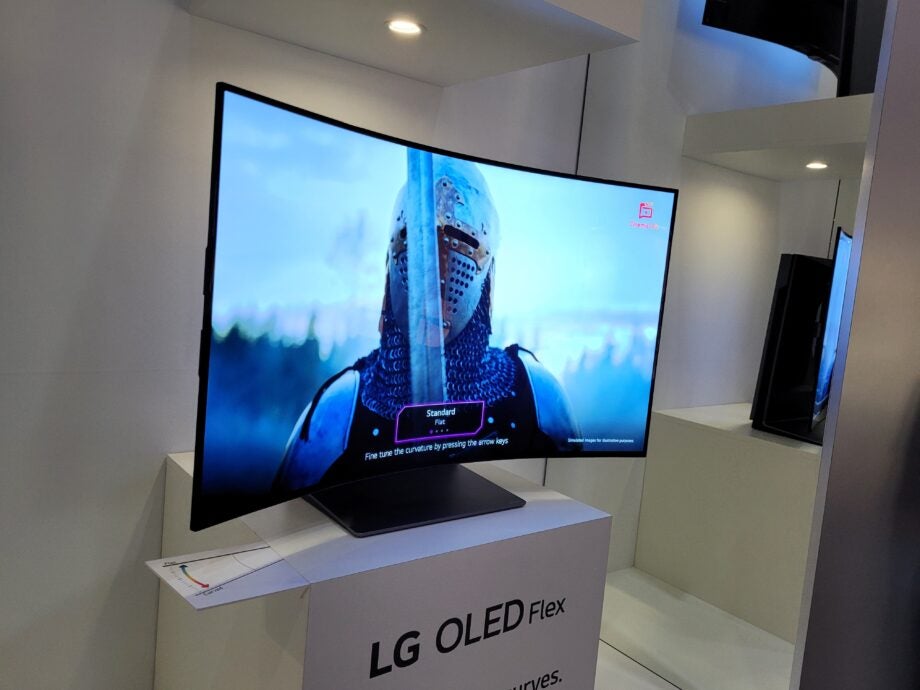
First Impressions
The LG OLED Flex is a remarkable gaming TV, capable of bending into either a flatscreen or curved design whenever you fancy. It’s an incredibly impressive feature that will no doubt be handy for both console and PC gamers, while the 4K OLED picture quality looks incredible too. Let’s just hope it isn’t as expensive as its specs sheet implies.
Key Features
- Bendable screen:The screen can be set to 20 different curvatures, ranging up to a 900R curve.
- 4K OLED picture quality:The LG OLED Flex uses OLED technology for inky blacks, as well as a 4K resolution for super-sharp imagery.
- Support for HDMI 2.1:Fully compatible with the latest games consoles, such as PS5 and Xbox Series X
Availability
- UKTBC
- USATBC
- EuropeTBC
- CanadaTBC
- AustraliaTBC
Introduction
The existence of curved monitors has been an absolute pain for indecisive gamers. There are pros and cons for both curved and flatscreen displays, making it difficult to commit to just the one.
The new LG OLED Flex TV looks to be the perfect remedy for this headache, with its bendy screen technology allowing you to switch between a flatscreen and curved design whenever you fancy.
A button on the bundled remote enables you to set the curvature, with the television screen bending accordingly. There are a whopping 20 different curvatures you can choose from, making this one of the most versatile gaming TVs I’ve ever seen.
I was able to try out the new LG OLED Flex for myself in Berlin at IFA 2022. Here are my thoughts.
Design
- Can pick between 20 different curvatures
- Cannot be mounted on a wall
- Features HDMI 2.1 for new-gen console support
The LG OLED Flex is a 42-inch TV, which is small enough to fit atop your desk, yet still just about large enough that it wouldn’t look odd in your living room.
When I first saw it on the stand at IFA, it looked like a generic TV, albeit with a wafer-thin bezel that ensures all of the focus is centred on that gorgeous OLED screen.
But the LG OLED Flex soon left me gawping, as an LG representative pressed a button on a remote, causing the screen’s two side edges to start bending inwards. The Flex isn’t limited to two positions either, capable of adopting 20 different curvatures up to a 900R curve.
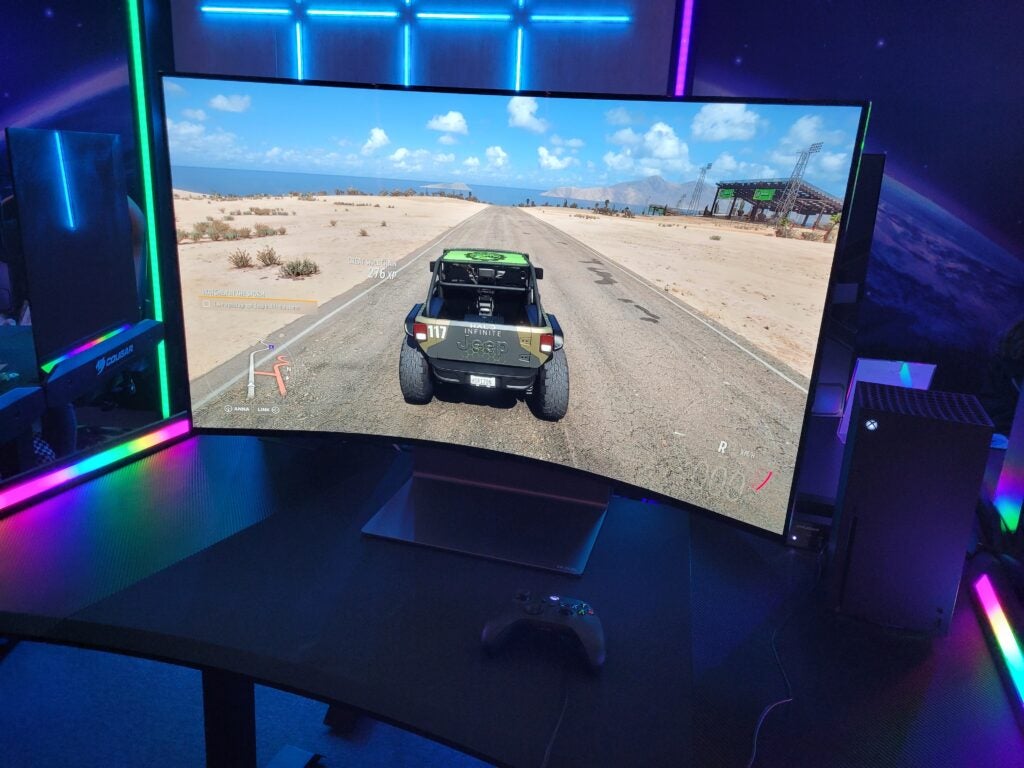
I used the LG OLED Flex set to the maximum curvature, and was impressed by how it wrapped around my head for a more immersive experience. When playing Forza Horizon 5, the Mexican landscape filled my entire peripheral vision, making it feel as if I really were standing there in the sunbaked desert.
You can of course get even wider curved monitors with a 32:9 aspect ratio such as the Samsung Odyssey Neo G9. LG has instead opted for a narrower 16:9 aspect ratio, as the company says the majority of games don’t support wider formats. That’s a slight disappointment, but you could also argue that having a 16:9 aspect ratio would be a little problematic in flatscreen mode since it’s so wide.
The way in which the TV screen bends is remarkable too. There’s no need to manually pull at the side and risk damaging it. Instead, you’re able to adjust the curvature via the bundled remote, with a slider allowing you to pick your ideal curvature. This is all thanks to a motor built into the TV’s stand – it’s a very clever solution, although consequently means you can’t mount the screen to your wall.
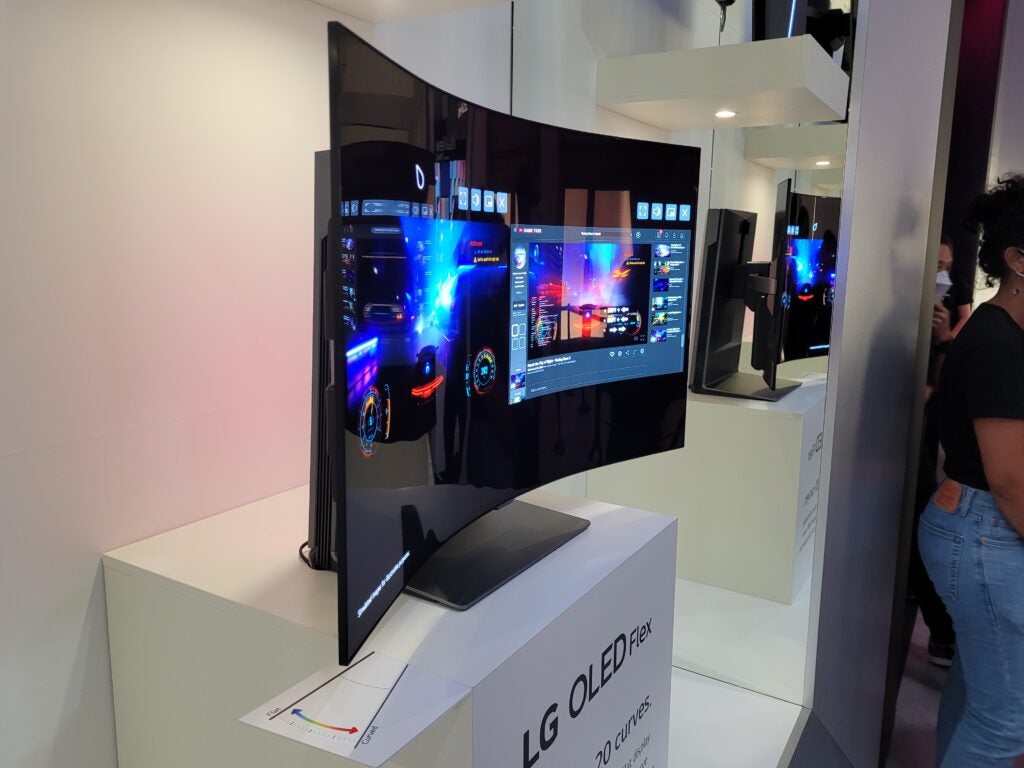
But why do you need a TV that can be set to various different curvatures? That’s an important question, as this functionality won’t be of interest to everyone. While curved screens are fantastic for improving immersion for games, they do have limitations elsewhere. They can be more prone to sun glare, have limited viewing angles and aren’t always ideal for the likes of productivity work and content creation. Being able to swap between the two forms allows you to optimise the monitor for any scenario.
It’s not just the curvature that can be tweaked, as the LG Flex OLED can also be tilted forward by 10 degrees or 5 degrees backwards. You can even adjust the height by 140mm either way, which should come in handy if you want to cram a chunky soundbar underneath.
The rear of the stand has been decorated with RGB lighting, dynamically cycling through colours as you play. Some may find this a little garish, although it probably won’t be visible if your desk is backed up to a wall.
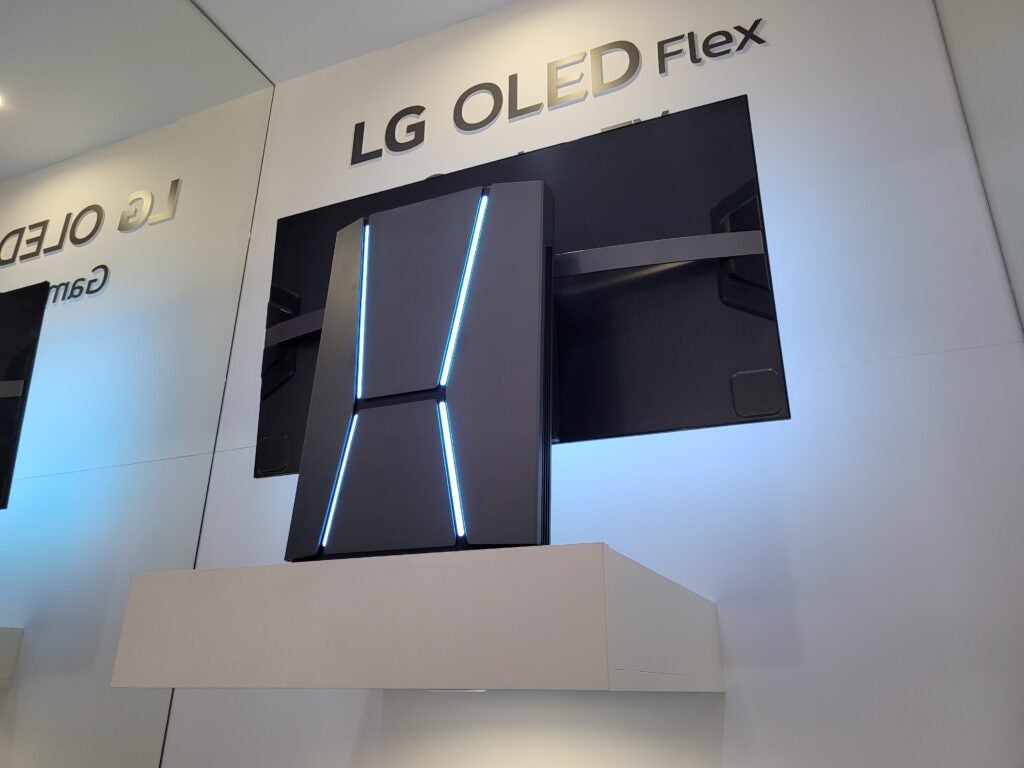
The LG OLED Flex has four HDMI 2.1 inputs on the rear, ensuring it fully supports new consoles such as the PS5 and Xbox Series X. LG decided not to bother with a DisplayPort connection though, which may perturb a few PC gamers.
There are two front-firing 40W speakers built into the monitor, but I was unfortunately unable to hear this clearly since I was in a busy exhibition hall. You’ll have to wait until our final review for our impressions on the audio.
Screen and features
- 4K OLED display
- Speedy 120Hz refresh rate
- Features WebOS and TV tuner
The bendable design of the LG OLED Flex is understandably dominating headlines, but LG has made sure that its screen specs are equally as impressive. This is an OLED panel, which was immediately apparent when viewing the inky on-screen blacks. Contrast is dazzling here, which is no surprise since this is an almost identical panel to the existing 5-star LG C2 TV.
The 4K resolution is also welcome, ensuring sharp imagery. I could comfortably see individual cracks in the roads when racing by, while the stunning Mexican vistas were wonderfully detailed. On-screen colours look bold and vibrant too, whether it’s the crystal blue skies of Mexico or the lush green vegetation.
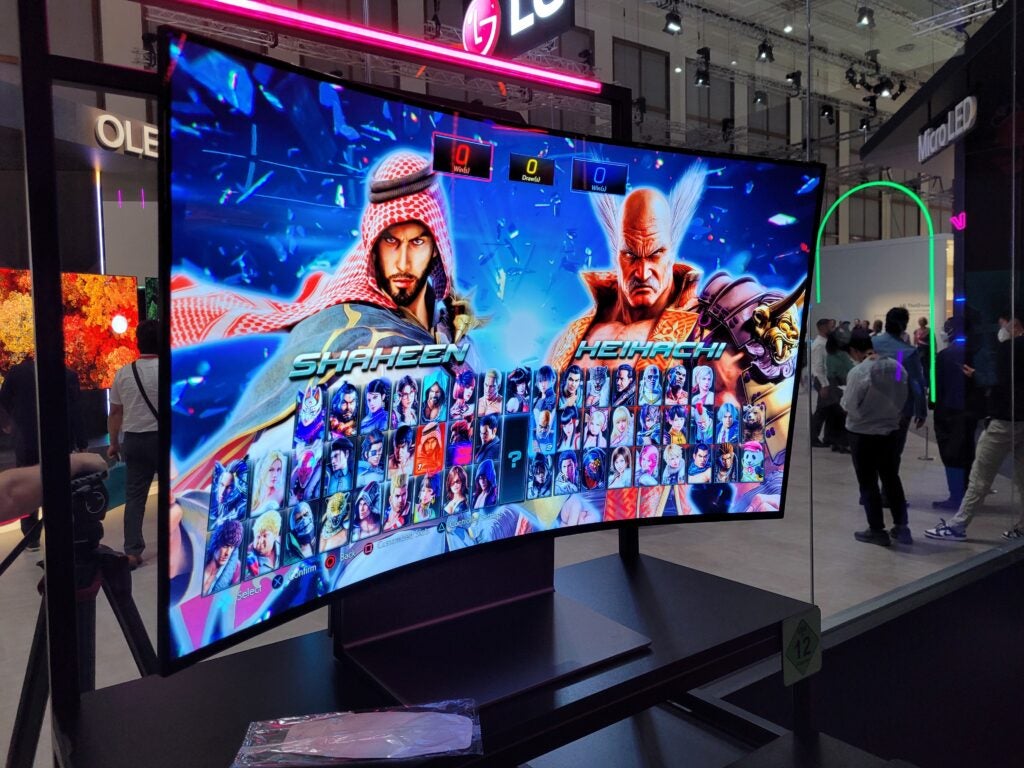
The refresh rate can be cranked up to 120Hz refresh rate, which is perfect for owners of the latest games consoles. PC players who play competitively may want an even faster performance, but the LG OLED Flex isn’t really catering towards the eSports audience.
Support for both Nvidia G-Sync and AMD FreeSync Premium should also make sure that you don’t encounter any screen tearing. LG claims the TV is capable of a lightning-fast 0.1 millisecond response time.
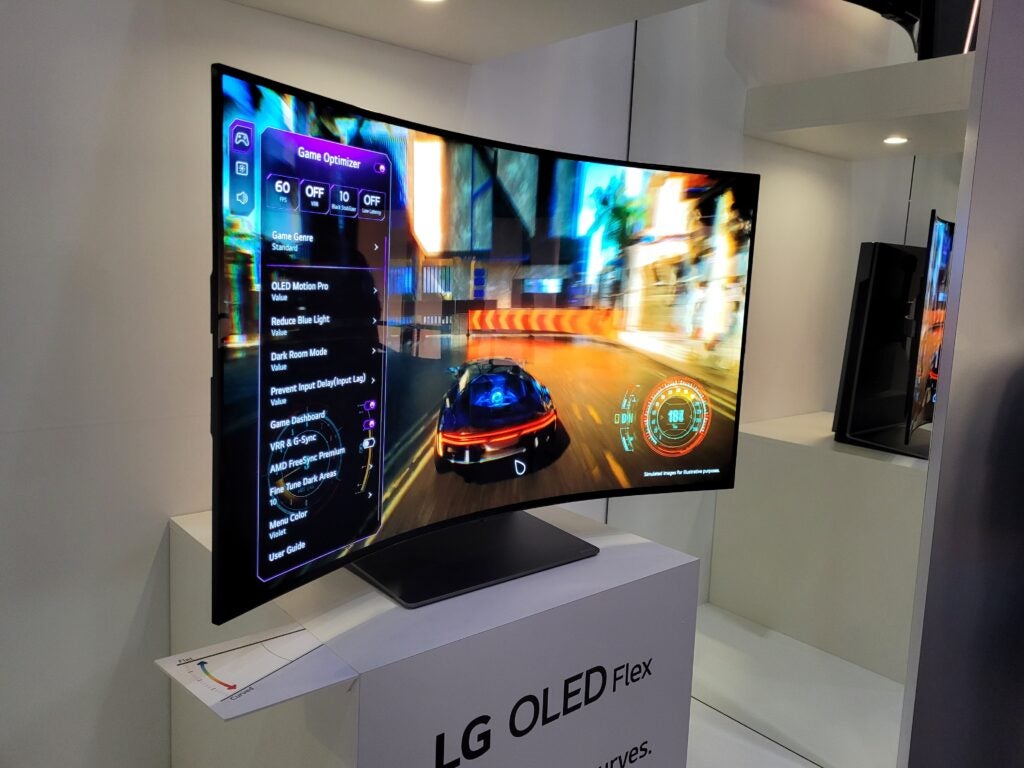
And let’s not forget that this is a TV rather than a monitor. This means it has a built-in TV tuner and runs WebOS, allowing you to access all of your favourite streaming apps without the need of third-party software.
I wasn’t able to check out WebOS, with the preview session exclusively showing off games such as Forza Horizon 5 and Tekken, but it’s the standard software you’ll get with any LG TV.
First Impressions
The LG OLED Flex has been the standout device of IFA 2022, with its bendable screen proving both innovative and practical. The level of immersion that it offers to gamers is astounding, while still being able to adopt a flatscreen design whenever required. No preceding gaming TV offers this level of versatility.
Picture quality is fantastic too, while sporting all the necessary specs to please both mainstream PC and console gamers. It’s genuinely difficult to think of what this monitor is lacking when it comes to gaming features.
My only concern is the potential price. LG hasn’t revealed the cost yet, but judging by the specs and showstopping bendable screen, this is going to be an extremely expensive purchase.

